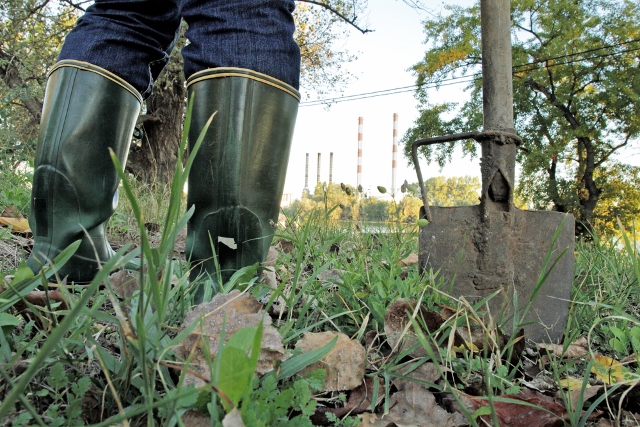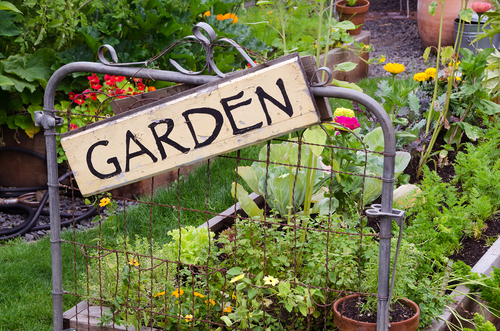 Written by Bridget James for Moms Clean Air Force.
Written by Bridget James for Moms Clean Air Force.
Take the home gardening plunge!
Since starting my family 7 years ago, I’ve chosen to protect my children by ensuring their food is safe to eat.After all, it’s those small bodies that are most at risk from these toxins. From lettuce and peppers, to strawberries and apples, much of our commercial food supply is covered in toxic chemicals known to be harmful.
I need to be honest — purchasing safer, organic products isn’t always cheap. In fact, it can be quite costly, sometimes almost twice the price of conventional products. And although I’m making positive purchases for the health of my family, the amount of carbon emissions to get organic products to our home still remains high. In fact, it’s estimated that over one third of the world’s carbon emissions is caused by agriculture—that includes moving food to the grocery shelves and ultimately, from the store to our homes. Since many organic products come from all over the world, that can negate the healthful value.
I wanted to lower my costly grocery bills, lower my family’s participation in lessening carbon emissions and feed my family the safest, healthiest foods. Therefore, I’ve taken the home gardening plunge!
How does my garden grow?
I started by speaking with experienced gardeners; asking for gardening tips in my home state, Utah. As my husband began constructing the raised garden beds using untreated wood that we filled with organic soil, my son and I began growing organic and non-GMO seedlings indoors in a warm, sunny location. In Utah, cold weather vegetables can by planted by seed directly into the garden around mid-March.

Green leafy vegetables, if harvested regularly, can offer a supply for many months. My family purchases organic greens weekly, so having a continuous supply of greens is money in our pockets and nutritious food in my children’s bellies.
Watch out for frost! It’s best to transplant warm weather crops to the garden after danger of frost. Coincidentally, every year we have snow in May when most gardens are already growing, so preparedness plays an essential role in protecting a young garden. Fortunately, during cold spells, I’ve been able to keep our produce safe by simply covering them. Makeshift greenhouses are also common to get a garden started early and to protect crops until summer.
3 simple steps to grow a garden and combat climate change:
1. Map out plant placement for maximize growing space and adequate sun exposure. In addition to garden beds, plants can also grow upwards by vining, and in hanging pots and smaller containers throughout your yard and garden.
2. Maintain healthy soil. I make sure to rotate the location of plants from the previous year. In prepping the garden for the growing season, we mix our household compost into the soil to feed our plants throughout the summer months.
3. Bring native plants into your yard that attract and feed the bees. Our world is seeing a large reduction in bee populations due to heavy pesticide use and this is threatening our food supply. Another good reason to avoid toxics in your yard and garden.
Note: I’ve had a few issues with animals eating our food. Birds love strawberries, and the minute they turn ripe, the birds eat them. To keep the birds from eating my sons’ favorite snack, I place old CD’s around the garden. When the birds fly near the fruit they quickly get scared away by the reflection.
Another issue I’ve struggled with is slugs. Last year, I lost an entire crop of beets to slugs. I planted 3 rows of beets this year for pickling, but recently noticed I had slugs again. I found non-toxic repellent pellets that I placed around the garden and haven’t had any more problems. Rodents can also be an issue. They eat whatever they can find. To combat this, we fenced in our large raised bed and use chicken wire around other growing beds.
Involve your kids, share the bounty and cut carbon pollution!
This year, I grew three times the amount of organic tomatoes, peppers and melons. With this abundance of starter plants, I supplied a neighbor and two friends with food for their gardens, lowering costs to their family budget and eliminating more carbon pollution.
Getting my children involved in the process has made such a positive impact on my family. They enjoy every aspect of gardening — from planting seeds to harvesting delicious vegetables. My children now understand where their food comes from, how to eat healthy, and they’ve made the important connection that the energy it takes to grow vegetables naturally reduces our family’s carbon footprint right now!
Bonus:
Learn more about climate change and how it can impact wildlife in this Green Divas Radio Show:
Asst. Ed.~Green Diva Amanda
Pingback: A Vegetable Growing Cheat Sheet (infographic) | Care2 Healthy Living